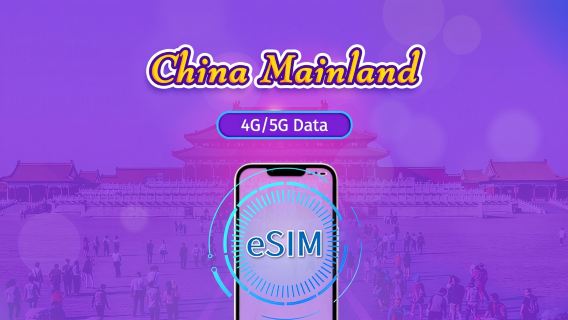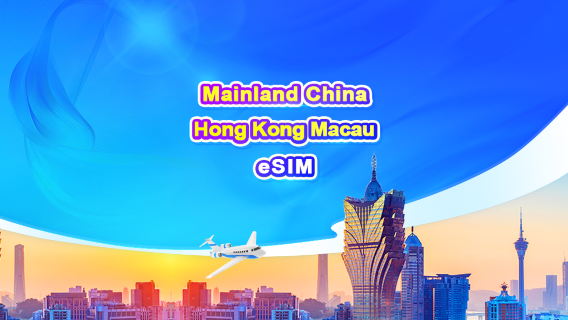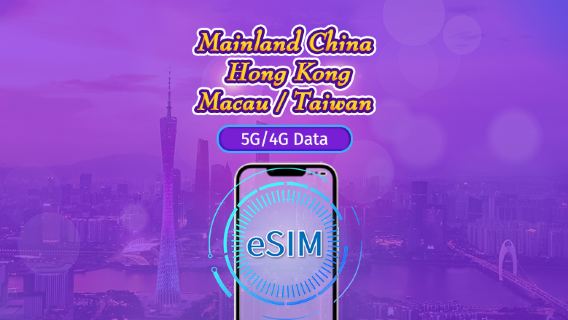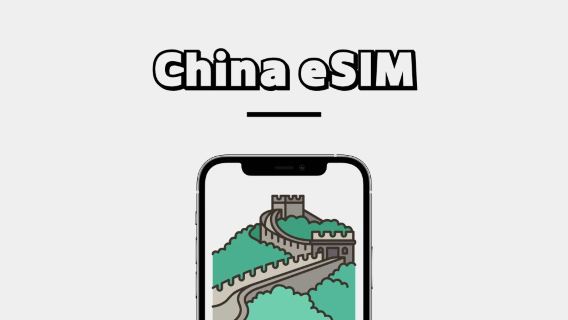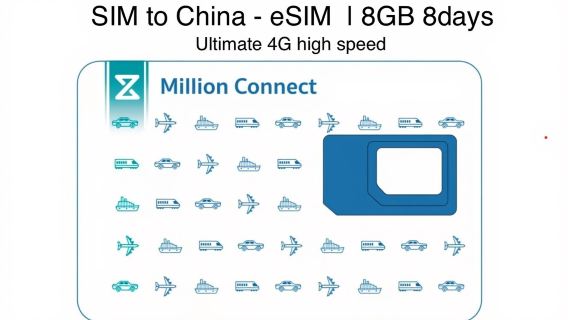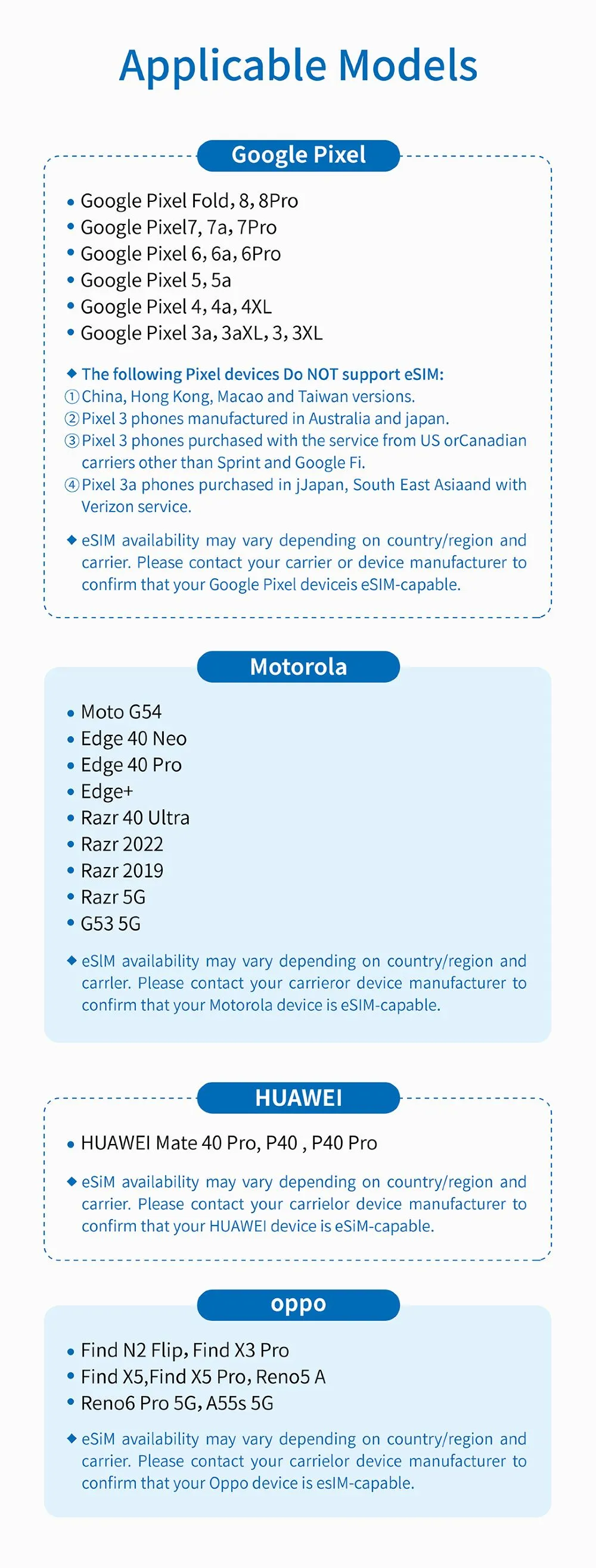In this guide, I'll show you exactly how to choose and set up your China eSIM, share tips to help you avoid common mistakes. Read to find the best China eSIM with VPN access to apps like X/Ins/Whatsapp/YT, etc. in China (no VPN needed)!
Top 3 China eSIM Plans (with VPN)
I’ve picked the top 3 China eSIM plans with the highest ratings and sales—I use them myself and highly recommend them in China! These 3 eSIMs all have built-in access to Western apps, so you don’t need a VPN in China (China blocks overseas apps—just book these eSIMs to stay connected).
If you’d like more options, just click the “Find More China eSIM Plans” button below the 3 cards. Don’t forget to claim your New User Coupon below! Enjoy an extra 5% off on top of already affordable eSIM prices.
Why Use eSIM in China? China eSIM vs SIM vs WiFi
Stressing about internet access in China? Don't worry - I've got you covered! Getting online in China is now super simple with eSIMs. Just download it to your phone before you fly, and you'll have reliable internet the moment you land. No more hunting for SIM cards or dealing with language barriers at phone shops.
Option | Pros | Cons |
- No risk of loss or damage - Easy to set up - Immediate use upon arrival | - Limited to a certain number of smartphones - Cannot use a phone number | |
- No need to charge - Not bulky - Many plans available | - Requires setup - Needs a PIN - Must have a SIM-free phone | |
- Immediate use upon arrival - Can be shared by multiple people - Connects multiple devices | - Battery life concerns - Difficult to receive and deliver |
Popular China eSIM Providers 2025
There are numerous eSIMs for travelling to China with the price ranging from 4 USD to 99 USD from Trip.com, eSIMX, GlobaleSIM, Nomad, and SimOptions, etc. After testing all major providers across Beijing, Shanghai, and Shenzhen, Trip.com stands out with the cheapest daily rates and flexible plans. Let's compare how different providers stack up📲
Quick Table for Top China eSIM Providers
Provider | Top Data Plans | Duration Options | Price Range (USD) | Network |
500MB/day - 100GB/day; 1GB Total - 100GB Total | 1-30 days | from $0.49 | China Mobile | |
Nomad | 3GB/day, 2GB/day, 20GB Total | 1, 2, 3, 4, 5, 6, 7 days | $20.00 - $26.00 | China Mobile |
eSIMX | 20GB, 15GB/day, 10GB/day | 7, 15, 30 days | $11.00 - $21.00 | China Mobile, China Unicom |
GlobaleSIM | 50GB, 20GB, 10GB | 30 Days | $12.00 - $44.00 | Local carriers |
Note: Prices and data plans for Trip.com eSIM are continuously updated. Always check Trip.com China eSIM website for the most accurate and up-to-date information.
Trip.com - Best Value, Reliable Network & Fast Speed
- 1-day: 500MB/day - $0.49
- 10-day: 1GB/day - $5.45 ($0.54/day)
- 15-day: 1GB/day - $8.35 ($0.56/day)
After testing Trip.com's eSIM across Beijing, Shanghai, and Shenzhen, I can confirm it offers the best balance of price and performance. Running on China Mobile's network, I consistently got 50-100Mbps speeds in cities and stable connections even in subway tunnels.
Setup takes literally 2 minutes - scan QR code, add eSIM, done. Works instantly with no registration hassle. Coverage extends to all mainland provinces, including tourist spots like Great Wall and Zhangjiajie. At $0.49/day, it's currently the cheapest and fast option in China.
While other providers give you a total data pool (like 10GB for your whole trip), Trip.com offers both total & daily data plans for you to choose. This means with their 10-day plan, you get 1GB every single day - if you use all your data on Monday, you'll still get a fresh 1GB on Tuesday. No more saving data for later or running out mid-trip!
Nomad - Polular but High Price
- 5-day: 3GB/day - $26.00 ($5.20/day)
- 7-day: 2GB/day - $24.00 ($3.43/day)
- 30-day: 20GB total - $20.00 ($1.00/GB)
While Nomad offers reliable service, their prices are significantly higher than Trip.com for similar data amounts. Same network (China Mobile) but at 3-5x the cost. Their setup is smooth and coverage is good, but why pay $26 for 5 days when Trip.com offers similar data for less than half the price?
eSIMX - Heavy Data Plans
- 7-day: 10GB total - $11.00 ($1.57/day)
- 30-day: 20GB total - $16.90 ($0.56/GB)
- 30-day: 10GB total - $11.90 ($1.19/GB)
eSIMX provides larger data pools without daily limits. Good for streaming and work calls, but once you use up your data, that's it - no daily refresh like Trip.com. Coverage combines China Mobile and China Unicom networks, giving reliable service but at higher prices per day than Trip.com.
GlobaleSIM - Long-Term Options
- 30-day: 50GB - $44.00 ($0.88/GB)
- 30-day: 20GB - $22.00 ($1.10/GB)
- 30-day: 10GB - $12.00 ($1.20/GB)
GlobaleSIM targets long-stay travelers but doesn't compete well on price. Their 20GB monthly plan costs $22, while Trip.com offers 30GB (1GB×30 days) for $15.99. Network performance is similar as they use the same network as Trip.
How Does Trip.com China eSIM Actually Work?
Here's the simple version: you buy an eSIM plan online (I'll recommend the best ones below), get a QR code, scan it with your phone, and that's it! Your phone now has a Chinese data plan ready to go. When you land in China, it connects automatically to local networks like China Mobile or China Unicom.
You can keep your home SIM card in your phone too. The eSIM handles your data in China (for maps, messaging, etc.), while your regular SIM can still receive texts and calls from home. Super handy for getting those bank verification codes or staying in touch with family.
😱Since China blocks overseas apps, most travelers use VPNs. Top China VPNs (like ExpressVPN, NordVPN) require setup and not so reliable — Trip.com China eSIM offers built-in access—just scan the QR code to instantly use WhatsApp/IG/x/FB and more without extra apps or configurations.
What are Reviews of China eSIM?
See why travelers love these popular China eSIMs, I check both Reddit reviews of China eSIM and Trip.com user reviews:
- Bypasses China’s app restrictions (no VPN needed)
- Faster & cheaper than airport/local SIMs
- Reliable coverage in cities & countryside
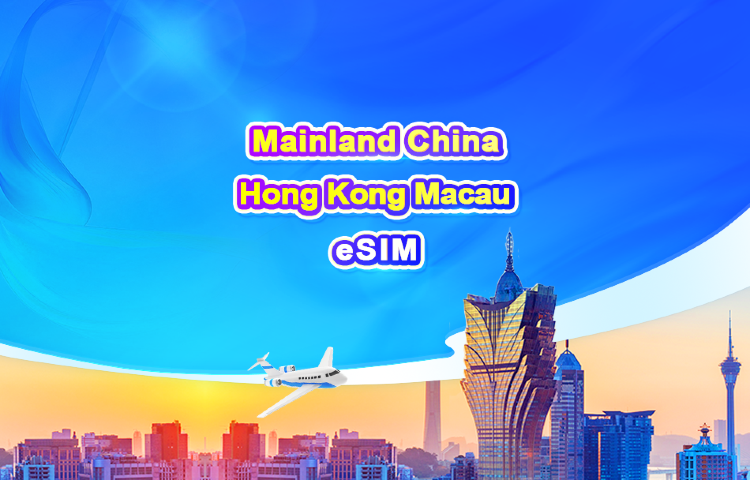

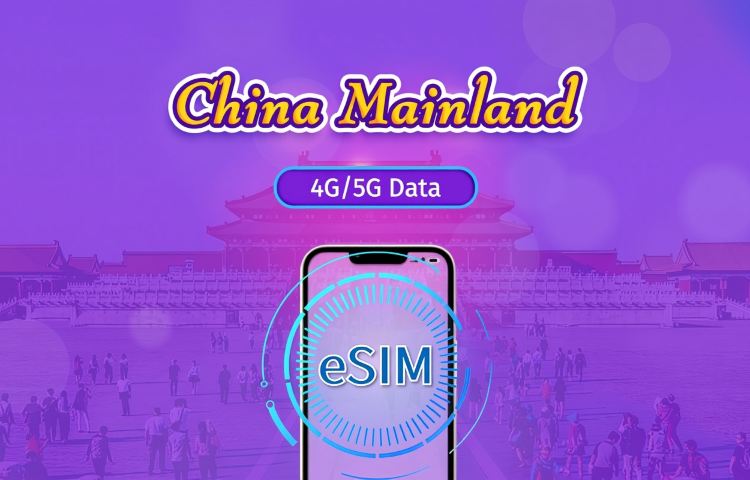
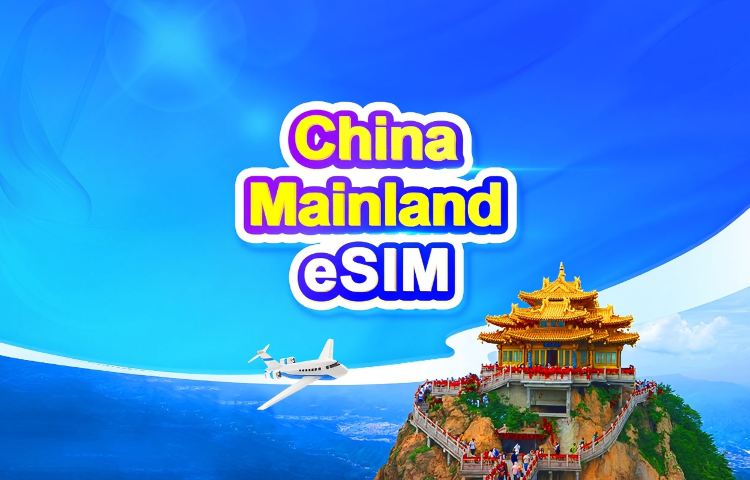
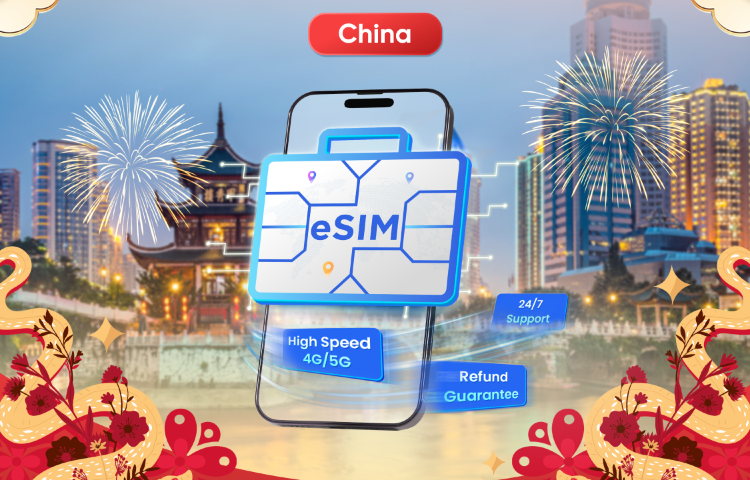
Want the same great experience in China? Grab your eSIM below—don’t forget your 5% new user discount!
How to Activate Your China eSIM on Trip.com (No QR Code Needed!)
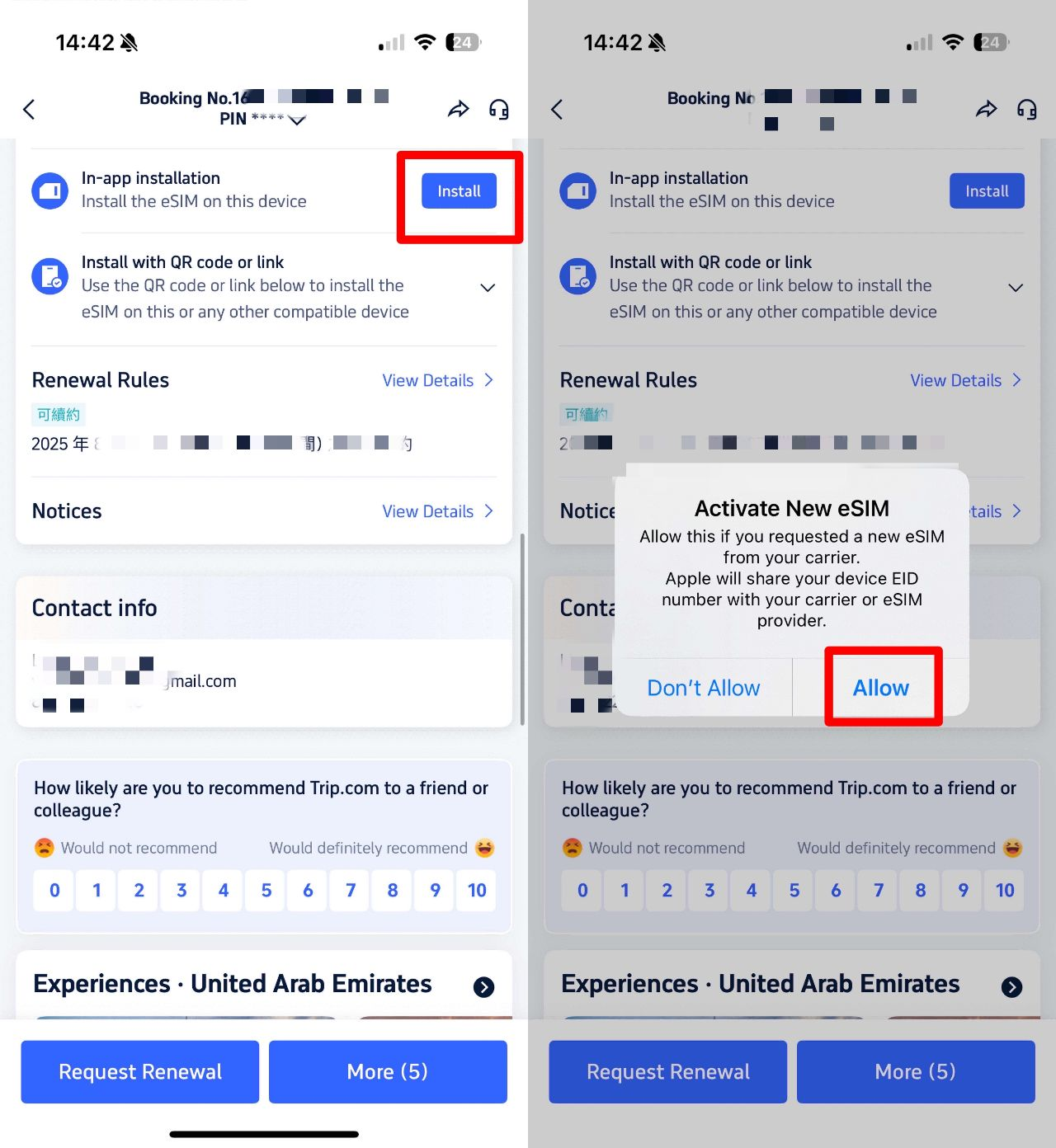
Booking your China eSIM is now easier than ever—no QR code scanning required! Here’s how it works:
1️⃣ Book your China eSIM on Trip.com
2️⃣ Go to your booking details → Find "In-App Installation"
3️⃣ Install directly to your device with one tap—no extra steps!
That’s it! Instant activation, no hassle, and you’ll stay connected to Western apps (no VPN needed).
Which Major Chinese Operators Do China eSIMs Connect To?
Trip.com China eSIM connects to China’s three major official operators (China Mobile, China Unicom, China Telecom) to ensure stable data signals across most travel destinations in China.These three operators cover over 99% of China’s populated areas, so whether you’re traveling in big cities (e.g., Beijing, Shanghai) or scenic spots (e.g., Zhangjiajie, Guilin), you rarely encounter no-signal issues.
Operator | Key Advantages for Travelers | Suitable Scenarios |
|---|---|---|
China Mobile | The largest coverage in China, including remote areas (e.g., parts of Tibet, Xinjiang) | Traveling to less-developed scenic spots or rural areas |
China Unicom | Fast 4G/5G speed in cities, with lower latency for app use | Urban travel (e.g., business trips in Beijing/Shanghai) |
China Telecom | Stable signal in high-density areas (e.g., shopping malls, subway stations) | Daily travel in crowded city centers |
What are Differences between China eSIM and SIM card
eSIM and SIM cards are used for communication with smartphones overseas. Although they have many similarities, there are several significant differences.
SIM cards are plastic cards. They are inserted into a dedicated slot on the smartphone for use. When changing carriers, for example, you need to physically exchange this card.
On the other hand, eSIM does not exist as a physical card. It is an electronic SIM that is built inside from the beginning in the device. Carrier changes can be set on the device, so there is no need for physical exchange work.
Item | ||
Form | Physical Card | Embedded (electronic) |
Hassle of replacement | Card needs to be physically replaced | Only settings on the device |
Compatible devices | Requires SIM slot | Only devices that support eSIM |
Carrier change | Need to purchase and insert a new SIM card | Can be changed in the settings screen |
Size & Shape | Different sizes such as micro SIM and nano SIM | Physical size and shape don't matter |
What is Trip.com China eSIM with VPN?
Remember physical SIM cards? Those tiny chips you had to swap out every time you visited a new country? 🤔Well, eSIMs are the digital version - no more fumbling with those microscopic cards! It's basically a built-in digital SIM card in your phone that you can activate instantly.
Think of it like downloading a local Chinese phone plan straight to your device. Instead of visiting a phone shop in China (and playing charades to explain what you need), you can set everything up before you even pack your bags. Most newer phones like iPhone 11 and up, Samsung Galaxy S20+, and Google Pixels support eSIMs.
More Importantly! Trip.com China eSIM comes with built-in VPN for foreigners so you can access apps like X/INS/YT in China!
How to Choose: Trip.com China eSIM VPN or Regular VPN?

Traditional top VPNs (such as ExpressVPN, NordVPN) have two main pain points for China travelers:
- They require separate download and configuration, which can be complicated for users unfamiliar with tech;
- Their stability is inconsistent in China, often facing connection drops.
By contrast, Trip.com China eSIM’s VPN has three key advantages (all based on user-friendly design):
- No extra apps needed: The VPN is pre-integrated into the eSIM—after scanning the QR code to activate the eSIM, you can instantly use apps like WhatsApp/IG/X/FB;
- Zero configuration: No manual setup (e.g., server selection) is required; the system automatically connects to stable channels;
- Syncs with data plan: The VPN runs on the eSIM’s local Chinese network, ensuring smoother access compared to independent VPNs relying on overseas servers.
How to set up and use China eSIM?
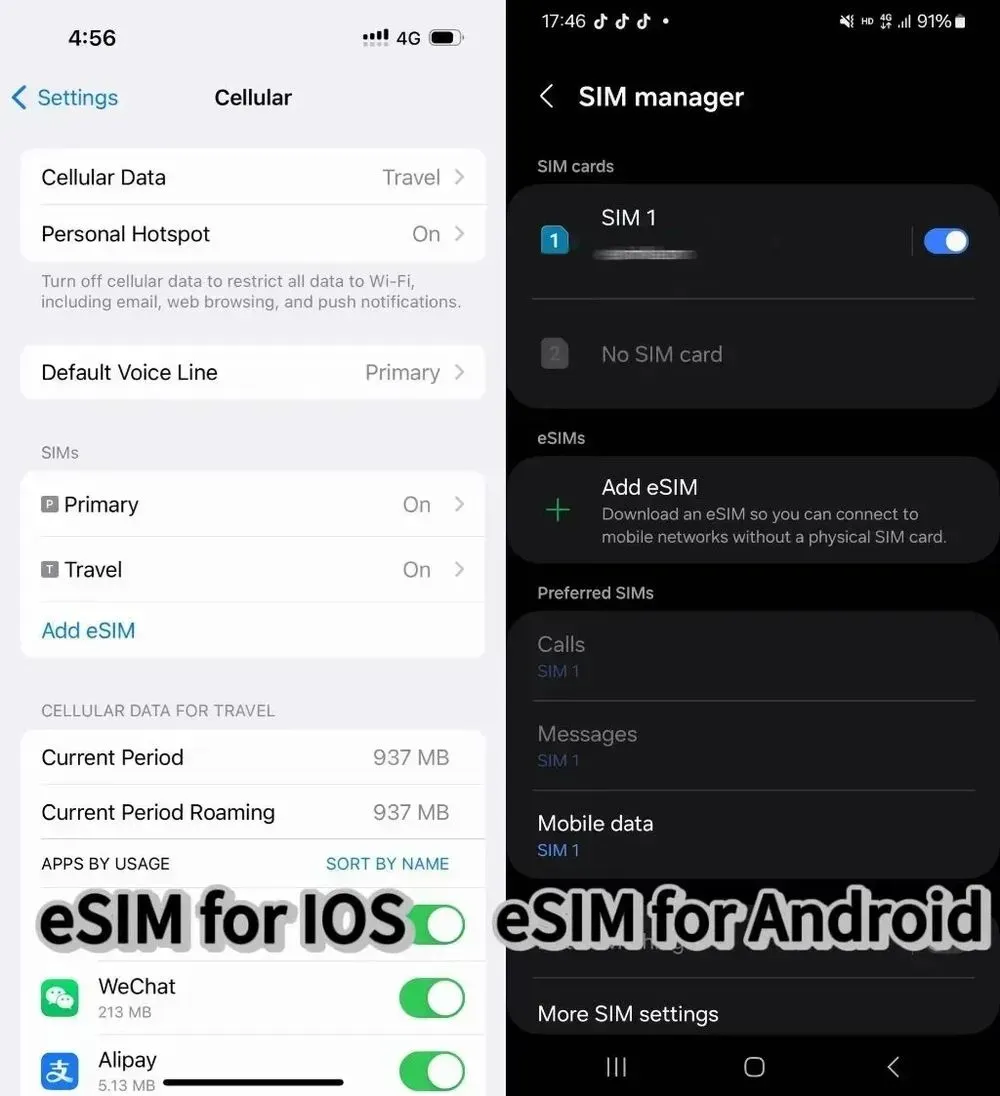
Before purchasing an eSIM product, please check if your mobile phone is compatible with eSIM.
How to Install China eSIM
1. Check the QR code displayed in the eSIM activation email.
2. Go to "Settings" on your smartphone's home screen and select "Mobile Data" (iOS) or "SIM Card Management" (Android).
3. Add a mobile data plan (iOS) or tap "SIM Card Management" (Android), agree to install Mobile Data (iOS) or SIM Card Management (Android), and then scan the QR code displayed in the activation email to complete the installation.
How to use China eSIM
1. After installation, turn off the traditional SIM card.
2. When using Mobile Data (iOS) or SIM Card Management (Android), the LTE icon will be displayed in the upper right corner.
3. Turn on data roaming to enable communication.
4. If you are not connected to the network after performing the above steps, toggle airplane mode on and off or restart your smartphone.
How to deactivate China eSIM
Tap "Mobile Data" (iOS) or "SIM Card Management" (Android) and switch it to "Off" (the same procedure applies for activation).
✅Need to compare more eSIM plans in China? I've found more super good data plans at cheap prices for you guys!
Which is Better in China? eSIM, SIM card, or Wi-Fi router

SIM cards can be used without worrying about charging like Wi-Fi routers, and they have the advantage of taking up less space. You can choose from many plans. However, there are disadvantages such as complicated setup and the need for a SIM-free smartphone.
Wi-Fi routers can be set up easily upon arrival and can be shared among multiple people or connected to multiple devices. However, there is a possibility of increased charging and handing over, as well as increased costs. eSIM does not require a physical SIM card, so there is no worry of loss or damage. The setup is relatively easy, but it is limited to compatible smartphones.
Below, I have summarized the three characteristics and points to note in a table.
Feature | Caution | |
eSIM | No risk of loss or damage | Limited number of smartphones can be used |
SIM card | No need to charge | Setup required |
Wi-Fi router | Can be used immediately upon arrival | Worried about charge life |
It is important to choose the most suitable one according to the scene and purpose of use, considering the features and disadvantages.
What are 3 Benefits of eSIM in China

1. Can be used immediately upon arrival in China
One of the major benefits of eSIM is that you can smoothly access the internet from the moment you land at the airport when visiting China. With conventional SIM cards, you needed time to purchase them at the airport shop or receive the SIM card you ordered in advance. However, by downloading eSIM in advance, you can connect to the network as soon as you get off the plane.
This allows you to efficiently proceed with your travel, such as arranging taxis or guiding you to your hotel.
2. No risk of loss or damage
Conventional SIM cards are very small and require careful handling. Especially when replacing them during your trip, the risk of loss or damage increases. On the other hand, eSIM does not have a physical shape, so there is no need to worry about loss or damage. There is no need to go through the trouble of opening the SIM tray with a small pin or worry about accidentally dropping the SIM card.
3. Dual SIM is possible
By utilizing eSIM, you can use dual SIM. Dual SIM allows you to use two networks on one smartphone. This allows you to smoothly switch network environments when moving from Japan to overseas or from overseas to Japan. By having dual SIM, you don't have to go through the hassle of contracting the internet environment every time you visit multiple countries.
What are 3 Disadvantages of eSIM in China

1. Limited device compatibility
To use eSIM, you need a smartphone or tablet that supports eSIM. Newer models are becoming compatible with eSIM, but older models or some mid to low-priced devices cannot use eSIM. This means that you will need to check whether your current device can use eSIM or not, which can be a hassle. If you need to purchase a new device to use eSIM, you also need to consider the associated costs.
2. Cannot be used on multiple devices
Conventional SIM cards can be easily switched between devices. Therefore, you can use one SIM on multiple devices. However, since eSIM is built into the device, it is difficult to easily move it between multiple devices. Therefore, those who use multiple devices during their trip to China may find it inconvenient.
3. Cannot use phone numbers
In eSIM data communication plans, a unique phone number may not be provided or additional charges may be required. This may be inconvenient in situations where a local phone number is required, such as making restaurant reservations or contacting hotels. Conventional SIM cards often come with a phone number in addition to data communication, so this is an important point to consider when considering using eSIM.
What are Tips for Choosing China eSIM?
1. Is the price cheap?
The first point to consider when choosing eSIM is the price. Expenses during a trip to China include transportation, accommodation, meals, etc., so you would want to minimize the cost of communication. However, if you only pursue cheapness, there may be problems with communication speed, data capacity, and support system. Check the services provided and choose a plan with good cost performance.
2. Is the communication capacity sufficient?
China has advanced IT infrastructure and a high-speed internet environment is available. When choosing eSIM, the communication capacity is an important factor. Especially if you plan to stream videos or download a large amount of data, an unlimited capacity plan is recommended. However, unlimited plans tend to be more expensive, so choose according to your budget for the trip to China.
3. Are there good reviews?
Checking third-party reviews and feedback can help you judge the quality and reliability when choosing a good eSIM. Evaluations from users who have already used the eSIM are very helpful in understanding the actual user experience and the support provided in case of trouble.
Does Your Device Support China eSIM?
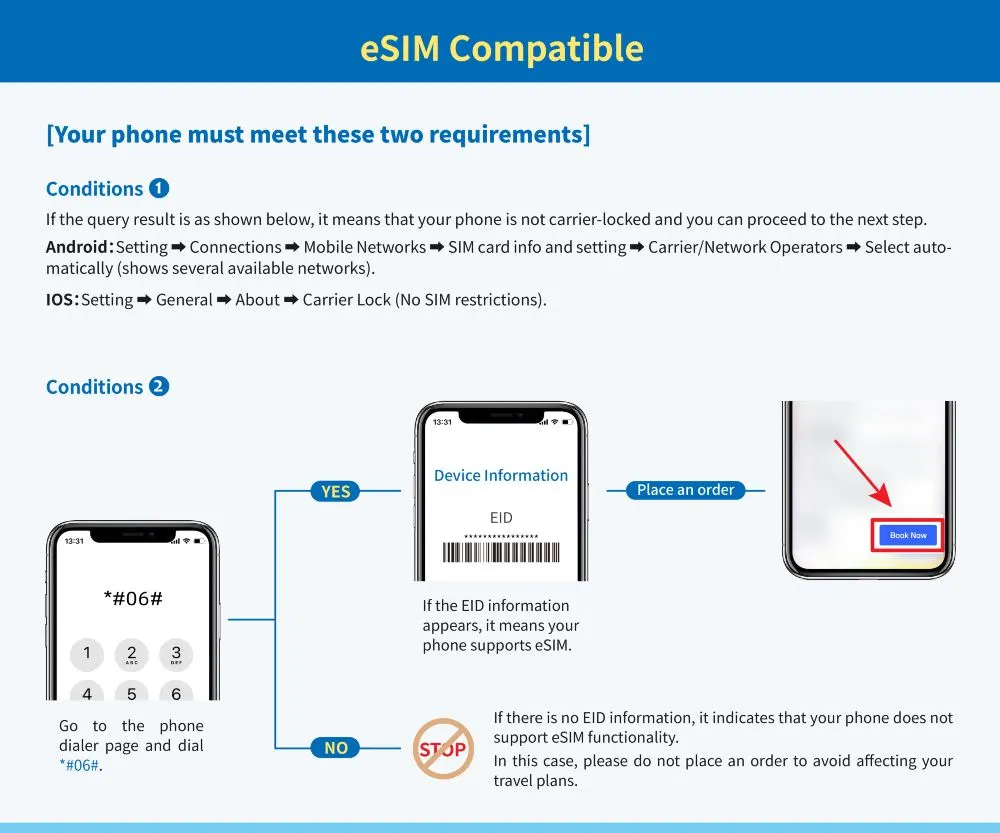
Here are some China eSIM Compatible Phones, please check if your phone support eSIM 👇👇👇
Related articles about China eSIM - See More Global eSIMs
 Global eSIM
Global eSIM 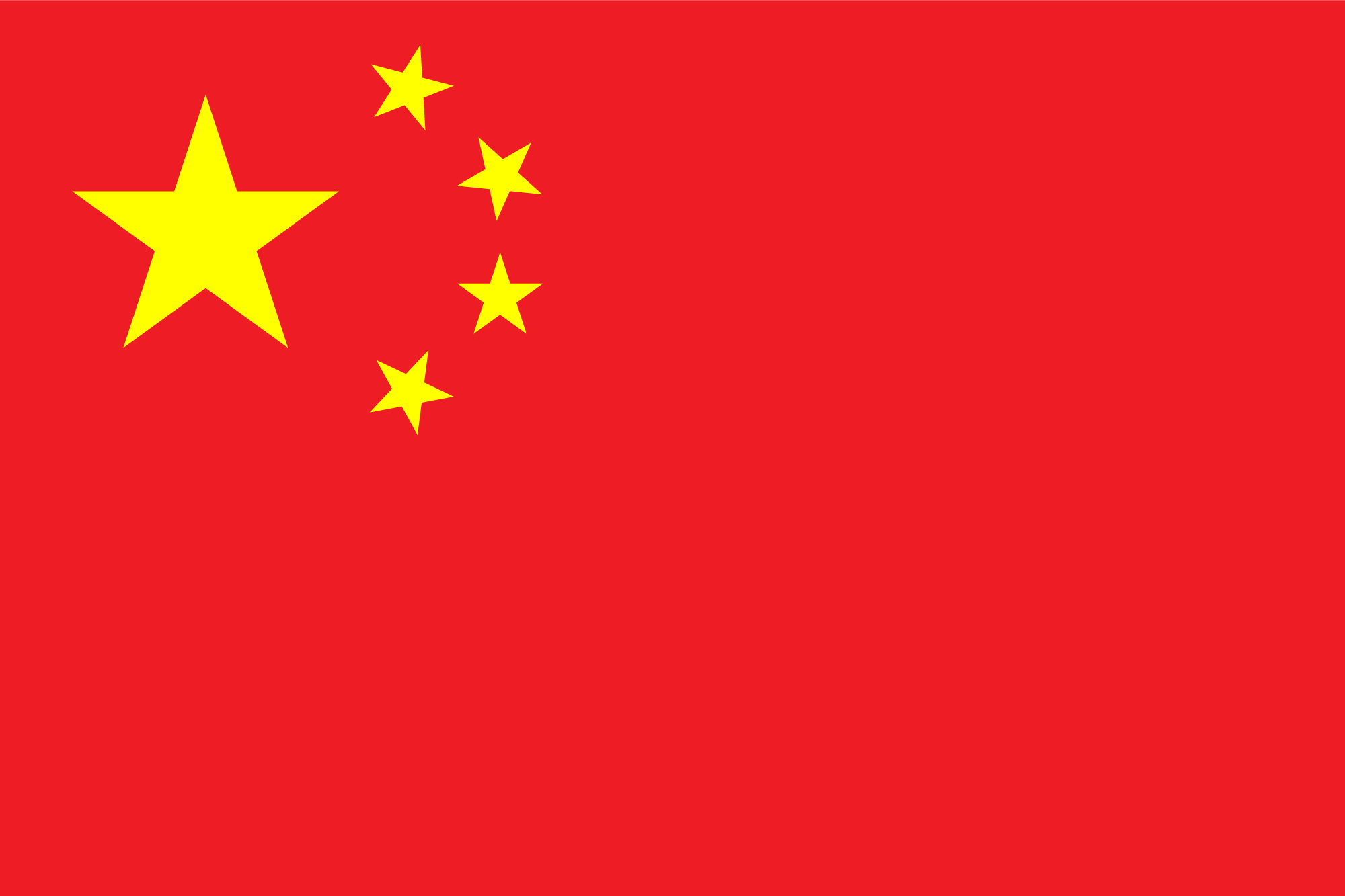 China eSIM
China eSIM  Thailand eSIM
Thailand eSIM  Japan eSIM
Japan eSIM  Vietnam eSIM
Vietnam eSIM  India eSIM
India eSIM  Malaysia eSIM
Malaysia eSIM  South Korea eSIM
South Korea eSIM  Indonesia eSIM
Indonesia eSIM  UK eSIM
UK eSIM  Singapore eSIM
Singapore eSIM  USA eSIM
USA eSIM  Italy eSIM
Italy eSIM  Egypt eSIM
Egypt eSIM  Saudi Arabia eSIM
Saudi Arabia eSIM  Germany eSIM
Germany eSIM  Canada eSIM
Canada eSIM  Portugal eSIM
Portugal eSIM  Pakistan eSIM
Pakistan eSIM  Aruba eSIM
Aruba eSIM  Switzerland eSIM
Switzerland eSIM  Greece eSIM
Greece eSIM  Israel eSIM
Israel eSIM  Morocco eSIM
Morocco eSIM 🔥Exclusive China Train Coupon: Get 3% OFF Now!
Book your China train tickets as a new user on Trip.com and enjoy a special 3% Off 🎁! Use our exclusive coupon to save big on your first train journey!!!👀
Why China eSIM is a Must for China Travel?

If you are planning a trip to China, eSIM is definitely an essential item for you. To fully enjoy China, constant access to the internet is essential. From hotel reservations to using maps and searching for local recommendations, a smooth communication environment will make your trip more comfortable and fulfilling.
Trip.com's eSIM is highly regarded by many travelers for its reliability and convenience and no need to use VPN anymore. Why not try Trip.com's eSIM on this occasion?
[8% Off] Best China Hotel Recommendations
From now until stock last, you can enjoy up to 8% off hotel deals on Trip.com when you register as a member on desktop or app!
What to Prepare for a Trip to China?
- Visa & Entry Tips China’s 240-hour visa-free transit policy now covers 54 countries, incl. the US, UK, Canada, and Brazil, allowing up to 10 days during layovers. Learn more about China Entry Tips to land in China easily.
- Getting Connected VPNs are vital for accessing Google, WhatsApp, Instagram, etc in China. Set one up before arriving. China eSIMs are the easiest option for data and bypassing restrictions. Pocket Wi-Fi devices work best for group but are pricier and require pickup/return.
- Money Exchange & Tax Refunds Exchange money in China banks (better rates than airports). ATMs accept foreign cards, but notify your bank first. For tax refunds, spend over ¥500 at stores with a "Tax-Free" sign. Keep receipts and get forms stamped at customs before departure.
Must-Have Apps in China
- China Payment Apps Forget cash. Chinese use Alipay (I like it better) or WeChat Pay to pay for everything in China. Scan a QR code at noodle stalls, metros, even temples. Link your foreign Visa/Mastercard before landing.
- China Map Apps Amap (Gaode Map) & Baidu Map (limited English) is what locals use, with real-time navigation, metro/bus routes, and traffic updates. Apple Maps does a good job too if you're already an IOS user.
- China Transport Apps Street taxis are cheap, but drivers rarely speak English. Use China Taxi App like DiDi (China’s Uber)—set your destination in English, pay by Alipay.
- China Travel Apps 15+ China trips taught me: Use Trip.com. It's the best English app for booking China trains/flights/hotels + finds Trip.com deals.
- China Dating Apps Locals use Tantan (China’s Tinder) and Momo. WeChat’s “People Nearby” works too, but expect language barriers unless your Mandarin’s decent.
- China Food App Use Meituan (also helps find nearby restaurants) or Ele.me for food delivery—both have English mode. No English menu in restaurants? Scan the QR with Alipay's translator.
FAQs about China eSIM
How can I switch to eSIM?
Go to "Settings" on your device, select "Mobile Data," and choose the corresponding eSIM number under the "Mobile Data" section. If you encounter any issues with the switch, please contact customer support.What if I can't scan the QR code during eSIM installation?
Make sure your device is properly connected to Wi-Fi. If it is connected but you still can't scan the QR code, check if the camera lens is clean and try scanning again in a well-lit area.Can I download the eSIM profile on a different device?
Downloading the eSIM profile is a one-to-one relationship. Once the eSIM profile is downloaded on a specific device, it cannot be transferred or re-downloaded on another device.Do you need VPN when using eSIM in China?
It depends on your needs. If you only use the eSIM for local Chinese apps (e.g., WeChat, Alipay, Baidu Maps), you don’t need a VPN. But if you want to access overseas apps (e.g., X, INS, YouTube, WhatsApp), you will need a VPN—unless you use an eSIM with built-in VPN (like Trip.com China eSIM), which allows direct access to these apps without extra setup.Why is eSIM not popular in China among local users?
eSIM is less popular among local Chinese users mainly for three reasons. First, most domestic users are accustomed to physical SIM cards and have low awareness of eSIM’s convenience. Second, early promotions for eSIM by China’s major operators (China Mobile, China Unicom, China Telecom) were relatively limited, focusing more on traditional SIM services. Third, some older domestic phone models (released before 2020) still don’t support eSIM functionality.Can foreigners use eSIM in China?
Yes, foreigners can use eSIM in China, and it’s a popular choice for travelers. Most newer phones (e.g., iPhone 11 and above, Samsung Galaxy S20+, Google Pixels) support eSIM, and services like Trip.com China eSIM are designed specifically for foreigners—you can activate it via a QR code before arriving in China, no need to visit local phone shops or deal with language barriers.


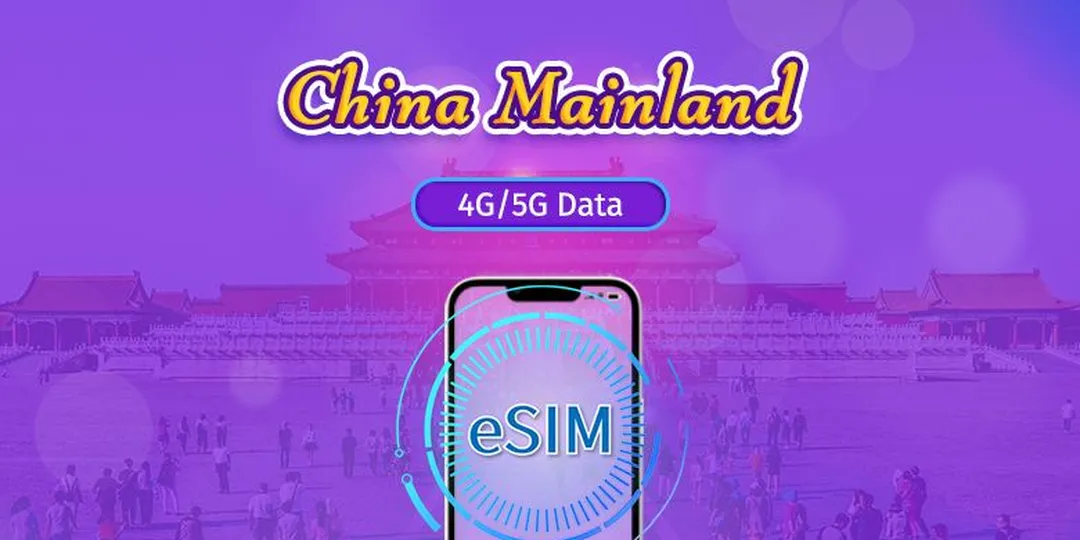
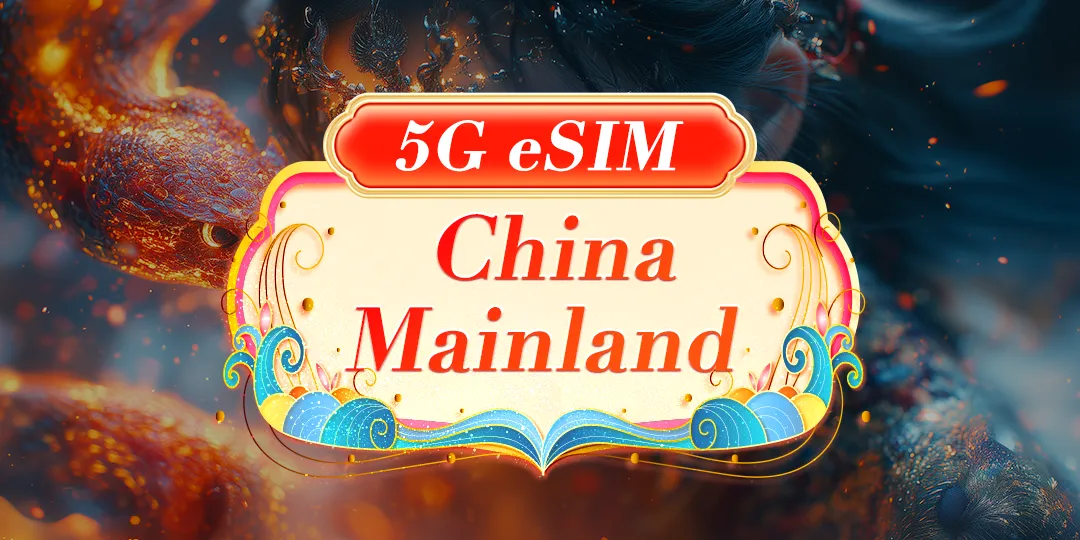






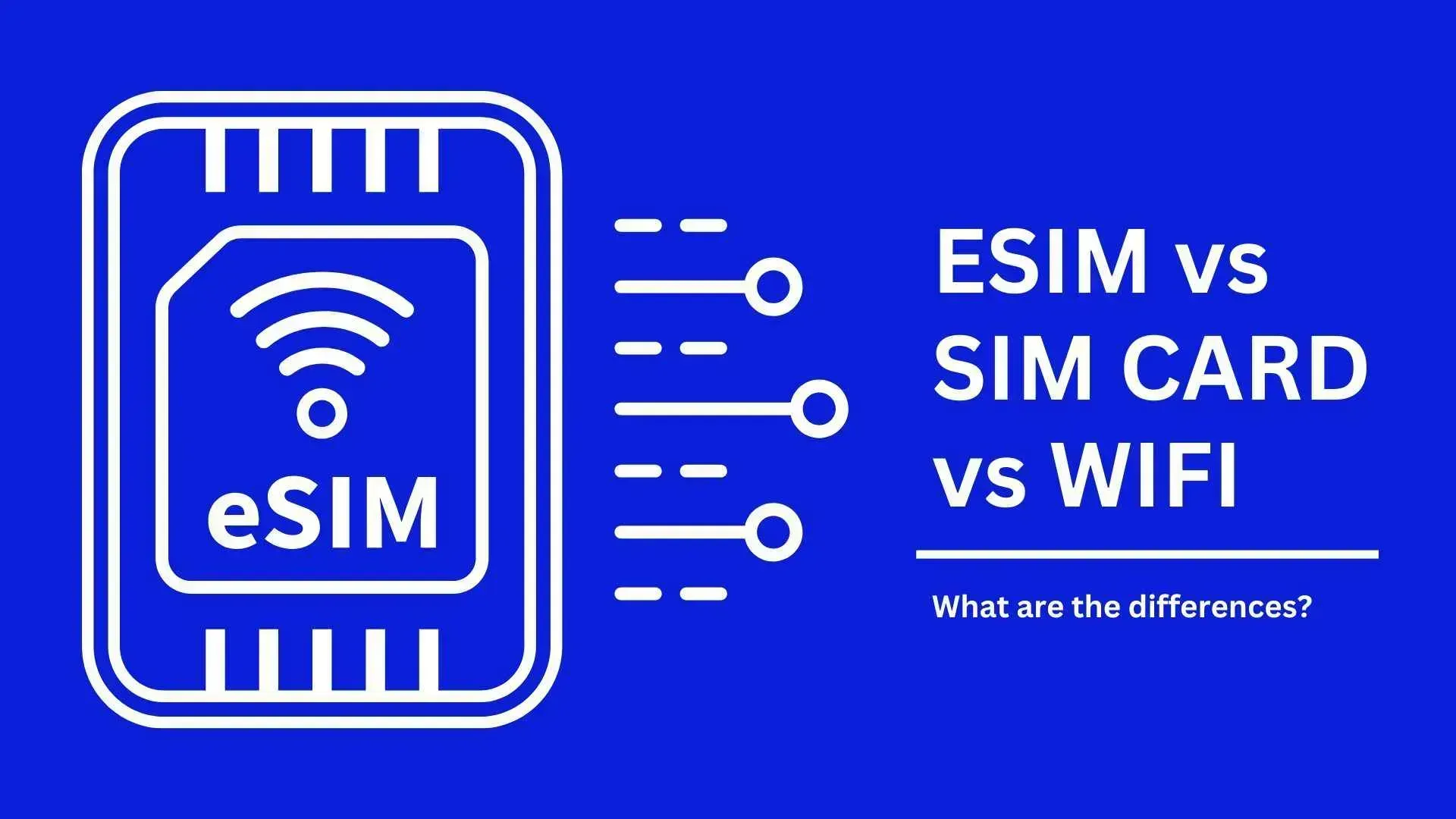


 384349 booked
384349 booked